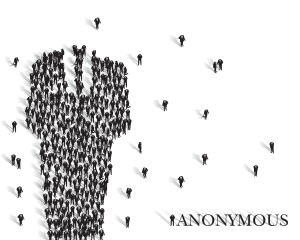 Anonymous, the hacktivist group whose members were recently accused of conducting a massive breach of Sony’s PlayStation Network, appears to be coming apart at the seams following a “coup d’etat” takeover of the group’s primary communications network.
Anonymous, the hacktivist group whose members were recently accused of conducting a massive breach of Sony’s PlayStation Network, appears to be coming apart at the seams following a “coup d’etat” takeover of the group’s primary communications network.
According to website Thinq_, a “splinter group” has seized control of two websites used by Anonymous to organize their various distributed denial of service (DDoS) attacks against their corporate and geopolitical enemies. Those site are AnonOps.net and AnonOps.ru, both of which host the Internet relay chat (IRC) channels used by Anonymous members.
A member of the AnonOps network staff, who goes by the name “Ryan,” tells Thinq_ that he and a number of other disaffected Anonymous members seized control of the sites because they believed the group had become too centralized. They also accuse some members of “behind-the-scenes string-pulling” that allowed these Anons to assume leadership positions in the previously headless organization.
Before now, it has been widely stated that Anonymous has no central leadership, a tactic used to limit the ability of law enforcement (or anyone else, for that matter) from discovering Anonymous members’ real identities, or infiltrating their operations. This, says Ryan, is “bullshit.” In fact, he says, there are ten users that make all the decisions during a DDoS campaign, which is done in a single IRC channel.
“There is a hierarchy. All the power, all the DDoS – it’s in that channel,” he says.
To further make his point, Ryan leaked the IP addresses of more than 650 AnonOps users to the Internet — a move he says was “regrettable but necessary” to prove that their system for organizing attacks was insecure, and promote the idea that Anonymous must decentralize to survive.
The Anonymous members that Ryan says act as puppet masters for the group firmly refute his claims, and insists that it is Ryan, not they, who has gone off the deep end.
“[Ryan] accuses us of trying to control Anonymous from behind the scenes,” one Anon told Thinq_. “In fact, the channel he refers to was for chat moderation and he himself was part of it.”
The group says that Ryan — who is allegedly behind the controversial transformation of Encyclopedia Dramatica into ‘Oh Internet’ — is threatening to use an 800,000-computer-strong botnet (a group of computers taken over by hackers) to attack AnonOps, if they are able to take back the site from the splinter group. They also called Ryan “dangerous,” prone to “outbursts,” and “arrogant and narcissistic.”
“We all knew Ryan was dangerous,” said one Anon. “Just how dangerous nobody was quite sure. He has always had little outbursts. We knew one day there would be a massive one, but we were never sure when.”


